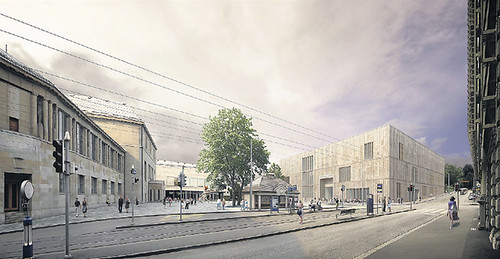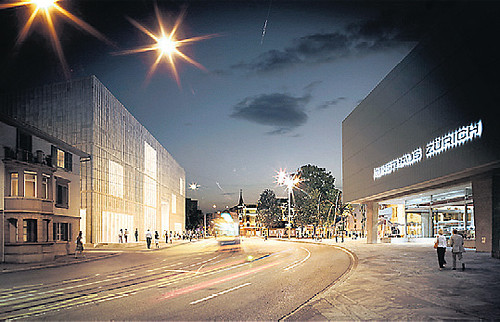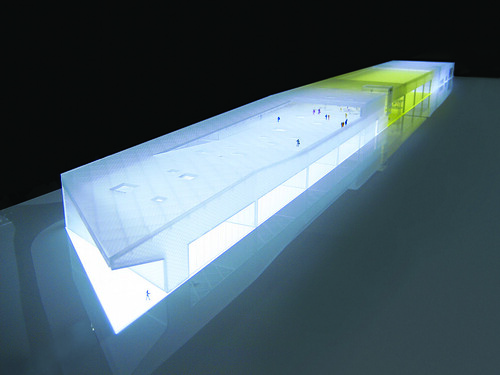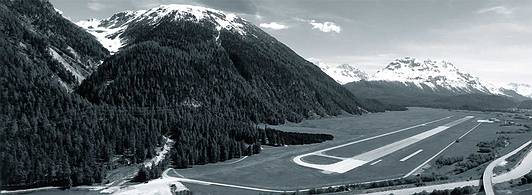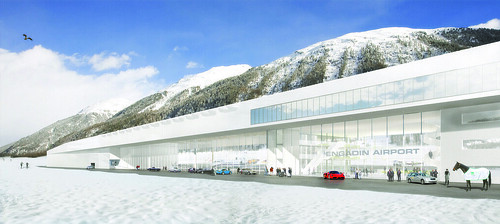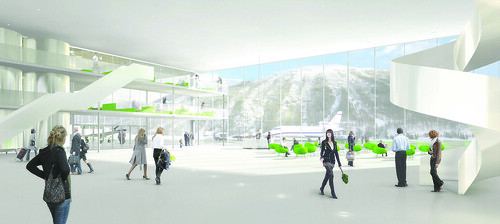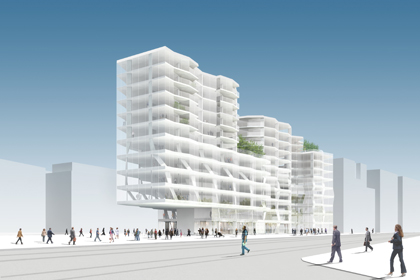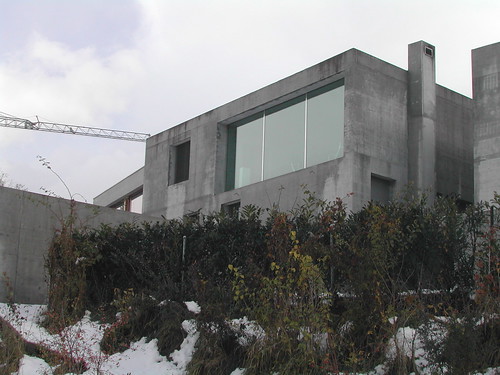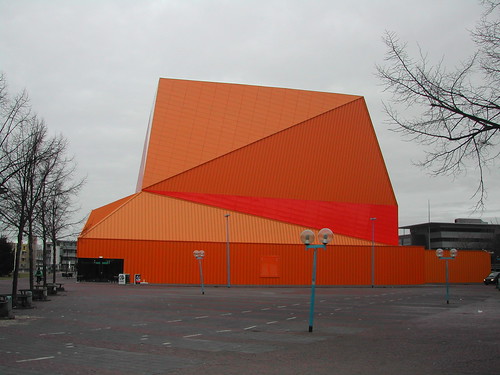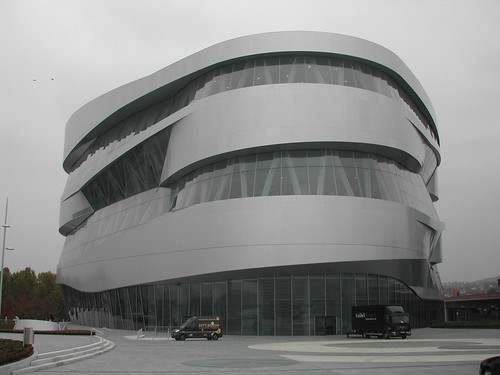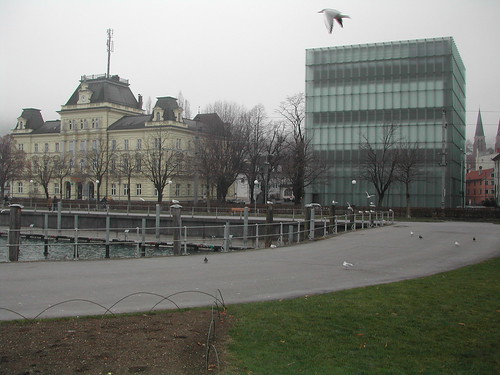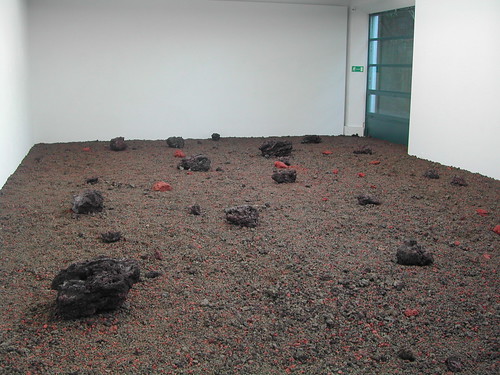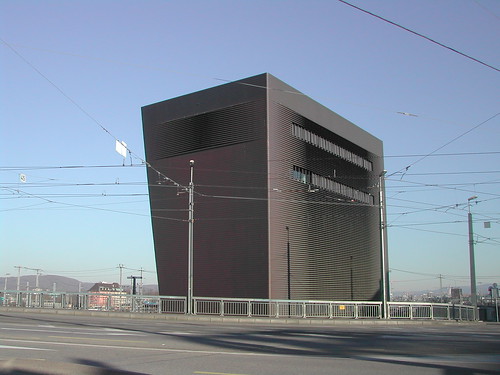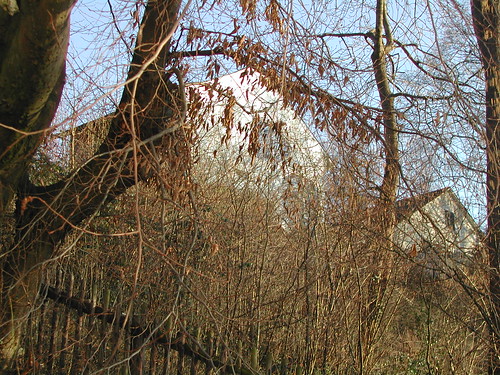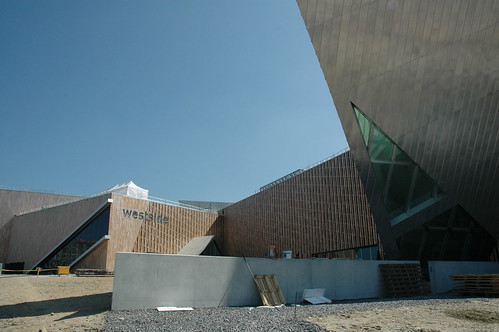
View from north of the outside of the new Westside shopping center, designed by Daniel Libeskind.
updated
Introduction
The Westside shopping center in Brünnen, a part of the city of Berne (the capital of Switzerland) , opened it's gates this weekend.
The project was started 2000, when Daniel Libeskind won an international competition to design the shoppingcenter. Construction did not start until 2006.
The complex not only features a shopping mall, but also a conference-hotel, a cineplex, elderly people housing and a spa.
The whole development at the western most part of the city of Berne will complete a dense housing development started in the seventies and when completed will offer housing to additional 3000 people.
The shoppingcenter is said to cater an area with around 1.2 Million people sourrounding the city of Berne.
More images in my
flickr-set of the Westside shopping Center.
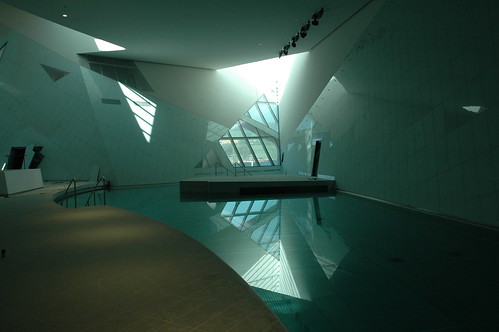
Inside view of the spaa and pool-area, designed by Daniel Libeskind.

View from north of the outside of the new Westside shopping center, designed by Daniel Libeskind.
A critique?A friend of mine (until I have verified if I am allowed to name him by name) asked me the following question regarding this project:
"Working on a critique, hah? This project seems to me like an extinct scenery for young people: where do the physical presence of elderly people and shops benefit from each other in an experience that claims to be "more than shopping"? It's very admirable to think of elderly people in a project at this scale, but then please tell me, why isn't the whole building capable of wheelchairs etc.? You should actually add that this building is a hoax.
Copy/Paste-ing previously used formal concepts (Jewish Museum, Berlin) to in terms of space and culture totally different locations on the globe is just not the way to do it. Sorry, Mr. Liebeskind."Additional programming of buildingWell isn't it? A building this large, with an Gestaltungsplan for a large part of Brünnen I suppose there were requirements to be wheelchair accessible, I didn't see any barriers or too narrow places on the contrary. This part of a "Mantelnutzung" around the actual shopping part of this complex is nothing particularly new, think of the Joggeli (St. Jakob Stadium) in Basel. The Brünnen AG, who planned the shopping center and the adjacent housing projects, a subsidiary of Migros was even required to add such an amenity by the the city of Berne.
First and second, it's no secret that our society is aging and soon you will have quite a number of people beyond 60 years of age and much older. So how do you face this challenge, actually quite a number of small towns in Switzerland have begun recently to plan and even build Housing for elderly people, often in the town centers, because of exactly this increase which won't happen some time in future but is already happening.
Third, relocating the concept of a mall from the US to Switzerland will ultimately fail if it's not adapted. Interestingly enough the first Swiss mall, the Glattzentrum planned in the sixties, was actually the first of such malls after the American example that was built in Europe. Generally speeking such places in Switzerland, Tivoli, Glatt, Sarganserland etc. pp. are mostly conglomerate of a broad variety shopping functions added over time, meaning you have a conglomerate of building creating a fictional mall-like-experience.
However, the context of Westside is a bit different. Located at the westernmost part of the city of Berne, actually already placed in the Landschaft and not inside the city, the term periphery here could be only applicable to the city itself and not to the "Agglomeration" of Berne, since it's still on the territory of the city.
Why I am making this painstakting distiction is, because exactly that will show us, wether the urban concept and planning will utimately fail or not.
See, at Brünnen you had those housing developments in Corbusier-like fashion that were built in the sixties and seventies. Eventually with this additional planning, which has been in the works since that time but was never realized, you will actually receive a densification of this part of Brünnen/Berne. Adding another 3000 poeple may not be much, but for Brünnen it is.
I suppose having a mixed-use planning would be the first stage or a potentially successfull planning. Also bear in mind that a single Shopping building probably would not generate nearly enough visitors, that's why a spa, cinema and hotel have been added, along the elderly housing.
That all generates traffic and a public (Öffentlichkeit), the additional concept that the ground functions are all walkable and that the area towards the housing area are all car-free might suggest, that it is intended to generate a Stadtteil, rather than a retail outlet, which it is of course.
A spatial separation between housing and shopping is still maintained, and the vertical integration and superposition that perhaps Christiaanse preaches is not implemented.
Considering all this, one still might be cautiously positive about the future development of this area.
The Architectural designRegarding the visual language, you're right to a certain degree. See, it is my utmost belief that buildings and such complexes should be designed by architects because there is additional value (Mehrwert) that solely developers can't achieve, because how the user feels and interacts inside the building cannot be planned with just efficiency or cost-engineering.
Inside I think, and critiques have shown that I suppose, the shopping center is quite a success, because the rooms are spacious, light and fairly attractive.
(In the context of Brünnen you could argue that the complex takes up the role of the Agora, but that would lead to far and is a whole other discussion, especially because Postmodernism is all about internalising public space, shown with that downtown-hotel in Los Angeles, that was one of the first, featuring a huge multi-purpose lobby)
Outside, on a detail level, the visual language is very appreciable, even the layering and positioning of the volumes is interesting and offers enough complexity.
But with architectural style, particularly with such of one architect, where he/she has developed a visual style that continuously gets repeated on various buildings might pose deeper problems. The problem is, what is exactly this style, are those visual elements that you adapt from one project to another or perhaps only a method that somehow leeds to similar output, because e your mindset works in a particular way.
My intention is not to rationalize the language best seen at the Jewish Museum in Berlin, U agree that ultimately such elements become merely a visual reference to something else, the signified elements have been totally detached and therefore you only get a codified image, index and are not able to reference it to something meaningful, without just creating a visual complexity enriching a façade.
